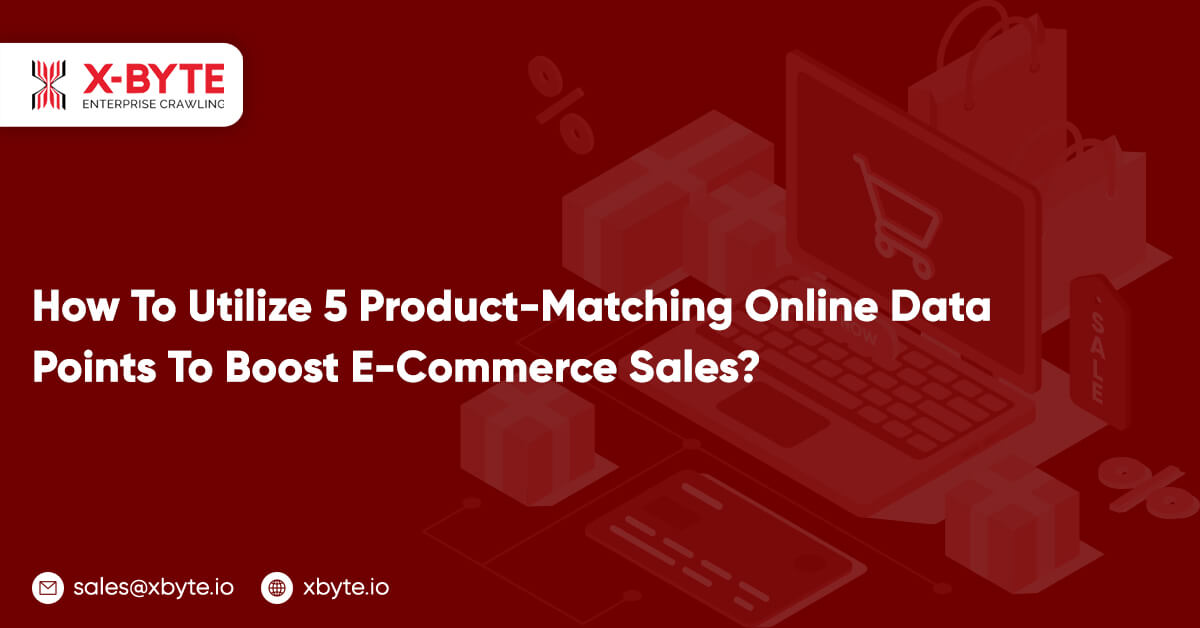
The biggest problem at the moment is the capability to gather and correlate data sets in various forms across many markets. In addition, items should be compared to the identical models/styles that competitors are selling. Especially when no manufacturer uses identical product IDs, names, or photos (deliberately) to confuse the competitors.
The below mentioned are the 5 methods to utilize the Data Collector, an automated data collection solution an automated e-commerce data gathering system that can be quickly expanded in real-time to meet changing demands may be put to use:
1. Smart Pricing Comparison

Challenge:
Many organizations find it challenging to price their products appropriately within their competitive environment. Simply looking for the cheapest price and outperforming competitors is rarely the greatest strategy. When enabling algorithms to determine price at a level that would convert among knowledgeable target buyers, retailers find it hard to take a variety of data elements into account.
Solution:
- Before systems choose to adjust the price, collecting and evaluating numerous data points can assist boost revenue by:
- Being notified when a rival runs a campaign, includes a freebie in a product bundle, or offers a pre-check-out discount. Competition may not lower their costs, but if they provide a free laptop case, they may be able to get you to buy.
- Comparing individual item characteristics and quality indicators to ensure you don’t ‘undersell’ your products. Consider two black winter jackets, one of which is made of hand-knit wool and the other of synthetic material. These sorts of item characteristics aren’t taken into account by traditional price comparison tools.
Furthermore, by determining the availability of competitors’ inventories of something like items, one may discover where supply-chain constraints exist and uncover possibilities to raise the cost
2. Items Particular Mapping

Challenge:
The difficulty here is determining which product characteristics are changing, why they are changing, and in which locations. The vendor’s information source will indicate that while selling women’s shoes, seven-item specifications are good. And that for listings with high Sell-Through Rates, including a brand name (e.g. Gucci) and the country of manufacture (e.g. Italy) is critical (STRs). However, this might vary depending on other aspects such as the customer’s region, pricing class, and brand, making the work significantly more difficult.
Solution:
The technique entails gathering and analyzing all necessary data points to more precisely identify the optimal amount of item characteristics for strong STRs in a marketplace. Women’s shoes created by a top-tier brand such as Christian Dior and sold in the $500-$700 range, for example, can transfer best with three-item specifics: ‘brand,’ ‘color,’ and ‘fabric.’
Whereas, American customers shopping for running shoes in the $100 range would want a great deal of information because they’ll be wearing them every day and wouldn’t want to be forced to purchase another pair if they don’t work out. The following is what these customers may anticipate to see.
The following product identifiers may be seen by these customers: ‘condition, “upper material, ‘model,’ color,’ style,’ and ‘material composition.’
3. Scanning Consumer Reviews

Challenge:
The challenge here is the ‘customer attitude’ or how a product is ‘subjectively perceived’ is complicated to gather and assess.
Solution:
Collecting customer feedback and evaluating them using Natural Language Processing is the solution (NLP). For instance, Consumers in Australia get irritated by the fact that specialized dog food takes up to a week to arrive. You can also link this knowledge gained from customer evaluations to another data set that shows a rise in sales of organic dog food alternatives within the same demographic.
You may gain market share by cross-referencing unconnected customer emotions. For example, you might stock up on organic dog food and prominently describe the health advantages in the item description while also providing free overnight shipping, addressing a variety of issues, and making your product more appealing to potential clients.
4. Analysis of the Listing Title

Challenge:
The main challenge is that the suppliers purposefully do not use particular models or names to mislead people for their competitors. This makes the comparison more challenging.
Solution:
The approach is to gather data on the best-performing goods in your specialized products and then assess them for the following:
- the length of the title
- Structure of a sentence
- Specifics about the item that appears in the title
Companies may better develop a ‘winning formula’ to enhance listing Click-Through Rates (CTRs), and eventually conversions, by combining all of these data factors. For instance, companies selling cell phones may find that names in the 7–10-character range that include the condition (e.g., new), the make (e.g., iPhone), and the color (e.g., rose gold), in that order, get 86% of consumer attention, clicks, and purchases.
5. The Impact of Visuals

Challenge:
The problem is that photographs are among the most significant parts of the digital purchase process. Products do not sell when the photos are incorrect. However, there are numerous characteristics of a picture that must be assessed at the same time, making selecting the proper images a genuine challenge.
Solution:
The solution is to gather and compare different data points from competitor’s listings, such as:
The total number of images in a specific listing.
The answer is to gather and compare different data points from rival listings, such as:
- The total number of photos in a particular listing (e.g., 5)
- Identifying if the picture includes humans or is just focused on the product?
- Identifying the angles from which photographs are obtained (low/high/close-up/zoom-out)
- Trying to figure out whether the majority of the photographs are ‘lifestyle’-oriented? Or is it more ‘technical,’ demonstrating how a product is utilized or the various product sizes?
Companies may make definite judgments on the best method to visually showcase a certain item after a clear image has been produced. For example, listings in the watch sector with high STRs may include three photos.
Conclusion
When trying to match products manually or with a single data point, can be a time-consuming and difficult process. Businesses may better position themselves for success when they use an automation process that puts numerous datasets into their systems, which can then be cross-referenced for insights.
For more details, contact X-Byte Enterprise Crawling now!!!!
